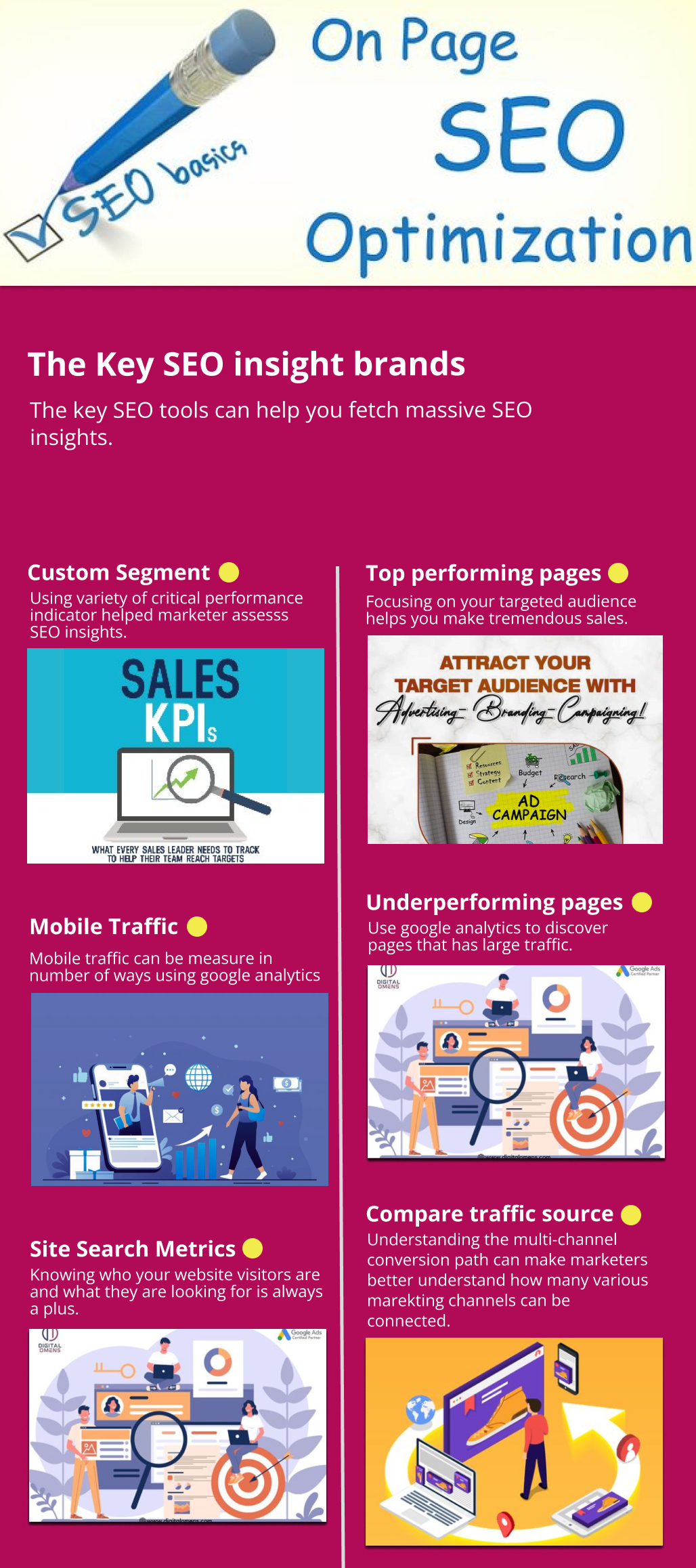 The configuration of Google Analytics must be improved in order to get the most out of it. It can assist advertisers better understand the demographics of their site’s audience. With the help of Google Analytics, you can find a plethora of useful data. With the help of this data, you can establish campaign goals and map out a marketing strategy. Your SEO efforts will be bolstered by the following Google Analytics insights.
The configuration of Google Analytics must be improved in order to get the most out of it. It can assist advertisers better understand the demographics of their site’s audience. With the help of Google Analytics, you can find a plethora of useful data. With the help of this data, you can establish campaign goals and map out a marketing strategy. Your SEO efforts will be bolstered by the following Google Analytics insights.
- Custom Segments
- Mobile Traffic
- Site Search Metrics
- Top Performing Pages
- Underperforming Pages
- Comparing Traffic Sources
-
Custom Segments
When it comes to SEO, bespoke segments have always been a need. Using a variety of critical performance indicators, the feature helped marketers assess SEO insights. Using this tool, we can look for a wide range of data, including organic traffic by channel, users who achieved objectives, demographics, and other relevant information.
The length of time a visitor spends on your website, the pages they view, their location, and more may all be used to create unique segments. It is possible to discover more about your website’s users and their engagement patterns through the use of custom segments.
-
Mobile Traffic
Mobile traffic may be measured in a number of ways using Google Analytics. The amount of conversions at the mobile page level can be determined by creating a mobile section. You should also pay attention to bounce rates on mobile devices. It will help you better understand the specific pages’ problems. You may also compare the bounce rates on mobile and desktop. It contrasts the mobile and desktop website user experiences.
-
Site Search Metrics
Knowing who your website visitors are and what they’re looking for is always a plus. An in-depth look of your site’s visitors and their browsing behavior can be gained with this tool. A search bar should be placed at the top of your page, and you should keep a close eye on it to make sure it works properly. Your website’s subsequent content planning can be aided by the visitor’s search phrase.
-
Top Performing Pages
It is possible to learn a great deal about a page’s performance and conversion rate by analyzing specific pages and their conversion rates. Determine if any of the pages have been negatively impacted in terms of ranking and traffic by looking at them one by one.
You should take action if you see a decrease in traffic and ranking on a specific page. The problem is most likely specific to that page. There may be more serious technology issues at play if the drop occurs on numerous pages.
-
Underperforming Pages
Organic traffic and search exposure on a website may diminish over time. In order to discover pages that had a large drop in traffic as a result of a possible algorithm change, use Google Analytics. Determine the pages that get a lot of traffic but have a low percentage of people actually clicking through. It’s a sign that the content has to be completely redone.
-
Comparing Traffic Sources
Understanding the multi-channel conversion path can help marketers better understand how various marketing channels can be connected to increase conversion. It will be necessary for marketers to compare traffic sources and conversion rates based on geographic location. It will help marketers decide how to allocate resources based on traffic source and market.